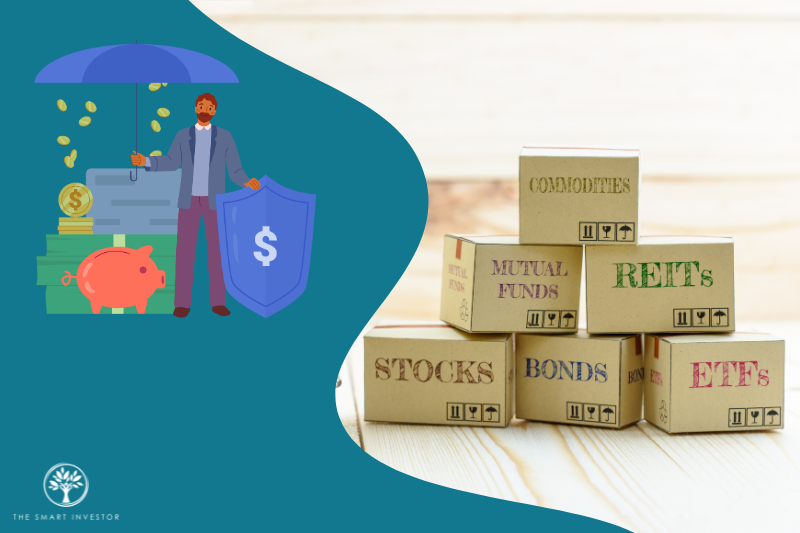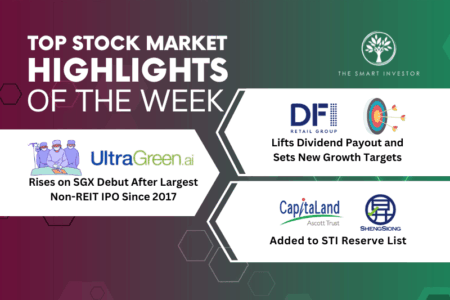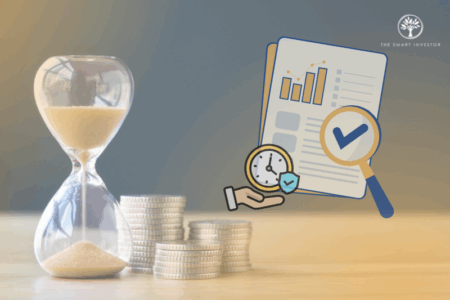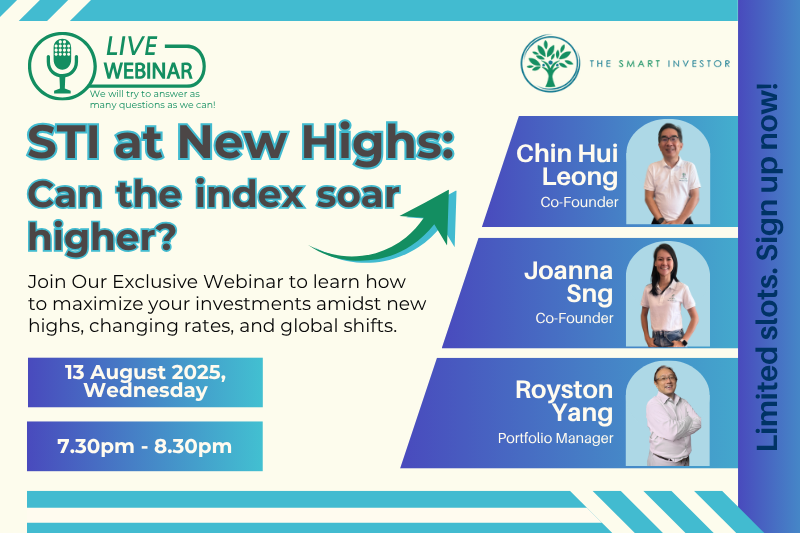After two years of elevated interest rates, the tide is finally turning.
The Federal Reserve (Fed) cut policy rates by 25 basis points in September 2025, its first reduction since December 2024, followed by another 25 basis point cut in October.
The easing cycle is expected to continue with potential additional cuts ahead.
The major shift in monetary policy is poised to reshape market dynamics.
Income-generating cash positions will likely lose value; growth equities will once again be preferred as financing will be cheaper, which will also help REITs thrive.
Repositioning your portfolio now helps you get the most out of the markets for the rest of the cycle.
Understand What Lower Rates Mean for Different Assets
Lower rates will affect the different asset classes differently.
Stocks:
When interest rates decline, corporate borrowing costs drop, and this provides a boost that supports earnings growth.
Profit and market valuation, especially of growth businesses and cyclical sectors, increase with cheaper debt.
Equities historically perform well in the 12 months following rate cuts.
The average 12-month return of the S&P 500 (SPX: INDEX) increased to approximately 18% when there was no recession near or during the Fed’s rate cut.
REITs:
Lower interest rates mean reduced financing costs for property acquisitions and refinancing for REITs, which helps to boost valuations.
Distributions can also rise when the cost of debt falls, making REITs more attractive in a lower-rate environment.
Bonds and Cash:
Money market rates and high-yield savings accounts become less attractive as rates fall, with each new issue offering progressively lower yields.
This is evident in the latest 6-month T-Bill auction, which yielded just 1.4%.
Despite the low return, the auction received S$15.9 billion in applications for the S$7.9 billion on offer, representing a bid-to-cover ratio of over two times.
Strong demand chasing limited supply continues to push yields lower.
As rates decline, investors must reassess their cash-heavy allocations and shift toward assets positioned to benefit from lower borrowing costs.
Reassess Your Income Holdings
When interest rates fall, high-yield fixed income and cash deposits become less attractive, as new issues typically carry progressively lower yields.
In Singapore, T-Bills and Singapore Savings Bonds (SSBs) have demonstrated this trend sharply.
Following the Fed’s September 2025 rate cut, Singapore’s 1-year T-Bill yield has fallen dramatically.
The January 2025 auction yielded 2.95% with a bid-to-cover ratio of 1.87.
By October, the yield plunged to 1.35%, while demand intensified with the bid-to-cover ratio climbing to 2.26.
In this environment, consider reallocating from static fixed income to dividend-paying equities with strong fundamentals.
Look for REITs and companies with consistent earnings, low debt levels, and reliable dividend histories.
CapitaLand Integrated Commercial Trust (CICT)(SGX: C 38U), for example, maintains stable occupancy and offers a steady yield of around 4.7%.
REITs are particularly well-positioned in a falling-rate environment.
Lower debt costs can boost distributable income, allowing dividends to remain stable or even grow—unlike fixed deposits, where returns only decline.
Rebalance your income portfolio from static cash instruments to growth-oriented dividend assets that can benefit from, rather than suffer from, lower rates.
Add Quality Growth Exposure
Growth stocks often outperform when interest rates fall, as lower rates boost valuations and encourage risk-taking.
Companies with strong cash flows and exposure to secular trends like artificial intelligence and digitalisation are particularly well-positioned.
For example, Keppel Ltd. (SGX: BN4) operates capital-intensive businesses across infrastructure, real estate, and connectivity – sectors where financing costs significantly impact profitability.
Falling interest rates reduce Keppel’s borrowing costs, improving cash flow and raises the present value of Keppel’s long-term income-producing assets.
The company’s financial performance reflects these favorable conditions.
In 1H2025, Keppel’s net profit surged 25% year on year (YoY) to $431 million, driven by strong infrastructure earnings and improved real estate contributions.
Trading at a trailing price-to-earnings (P/E) ratio around 20.5x, the market is pricing in continued earnings growth as lower rates support the company’s capital deployment strategy..
For capital-intensive businesses like Keppel, lower interest rates mean cheaper financing costs, improving project economics while higher asset valuations support growth investments.
Watch the Financials
Banks are in an interesting situation when interest rates fall.
On one hand, net interest margins (NIMs) typically compress as the gap between lending and deposit rates narrows.
On the flipside, lower rates can stimulate loan demand and boost fee-based income, partially offsetting margin pressure.
Singapore’s three major banks illustrate this dynamic.
In the second quarter of 2025, NIMs fell YoY across the board: DBS Group Holdings Ltd (SGX: D05) saw its NIM fall from 2.14% to 2.05%, United Overseas Bank Ltd (SGX: U11) declined from 2.05% to 1.91%, and Oversea-Chinese Banking Corporation Ltd (SGX: O39) dropped from 2.20% to 1.92%.
Yet these banks remain attractive income investments.
Despite NIM compression, all three maintained healthy dividend yields: DBS at 4.3%, UOB at 5.1%, and OCBC at 4.8% — excluding dividends or capital return dividends.
Rather than avoid financials, pick banks with diversified revenue streams beyond net interest income that can buffer against margin pressure, such as wealth management, insurance, and transaction banking.
Look for institutions with consistent dividend policies, and reasonable valuations.
While Singapore banks remain solid dividend plays, investors should temper expectations for earnings growth in a falling-rate environment.
Margin compression will likely weigh on profitability even as loan volumes recover.
Manage Cash and Bonds Strategically
With rates continuing to decline, this is the opportunity to lock in moderately attractive yields before rates fall further.
For yield preservation alongside liquidity, consider short- to medium-duration bonds.
For example, SSBs issued in January 2025 offered rates from 2.73% (year 1) to 3.01% (year 10).
By October 2025, those rates had fallen to 1.56% to 2.51% respectively..
The November 2025 issue is projected to offer just 1.39% to 2.44%, averaging 1.83% over the full 10-year holding period.
Fixed income should serve as a portfolio stabiliser rather than the primary income engine.
Allocating 10% to 20% of your portfolio to bonds dampens equity volatility, maintains liquidity, and generates modest passive income when markets are turbulent.
While the window for attractive fixed income yields is narrowing, maintaining some bond exposure remains prudent.
Even at lower rates, bonds provide ballast when equity markets inevitably experience corrections.
Maintain Diversification and Flexibility
Historically, equity markets typically advance in the 6 to 12 months following rate cuts – the S&P 500 has averaged 11% gains over the subsequent year in the 10 non-recessionary easing cycles since 1982,
However, interim volatility is common, and outcomes vary depending on economic conditions.
This underscores the importance of diversification.
Rather than concentrating in a single rate-sensitive sector (whether REITs, growth stocks or bonds), build a balanced portfolio across asset classes.
Consider a portfolio mix of 60% equities, 30% REITs, and 10% fixed income allocation as a framework.
Equities (60%): Benefit from lower borrowing costs that improve corporate profitability and support higher valuations. Focus on quality companies with strong cash flows across multiple sectors.
REITs (30%): Stand to gain significantly as falling rates reduce their largest expense – debt servicing costs. Lower refinancing costs free up cash for distributions, making REITs both income generators and potential capital appreciation plays.
Fixed Income (10%): Serves as portfolio ballast and dry powder. While yields are declining, bonds dampen volatility and provide liquidity to capitalize on temporary price dislocations in equities or REITs.
In a falling-rate environment, this portfolio mix captures capital gains from rising equity valuations, growing REIT distributions, while preserving portfolio stability.
A bond-heavy conservative portfolio might feel safe, but sacrifices returns.
On the other hand, an all-equity portfolio exposes you to unnecessary volatility.
Balance is key.
What This Means for Investors
A lower-rate environment opens opportunities for capital gains and dividend growth, but it also demands discipline.
Investors who plan early and reposition before the shifts happen can gain an upper hand.
Get Smart: Move Fast But Be Careful
Markets often move ahead of policy changes.
By the time the rate cuts are announced, valuations may already reflect the anticipated impact.
That’s why the eagle-eyed investors do not wait, and start rebalancing their portfolios now.
Focus on quality companies with strong fundamentals, steady dividends, and room to grow as financing costs decline.
Lower interest rates don’t guarantee easy returns, but a well-positioned portfolio captures the upside while managing downside risks.
Don’t let market uncertainty hijack your financial dreams. While headlines scream gloom, 5 Singapore companies have been quietly building wealth and paying reliable dividends. You’re probably overlooking them. Discover these resilient giants and their secrets to sustained income, even through global storms. Click here to download your free report now and secure your financial future!
Follow us on Facebook, Instagram and Telegram for the latest investing news and analyses!
Disclosure: Wenting does not own any of the shares mentioned.





